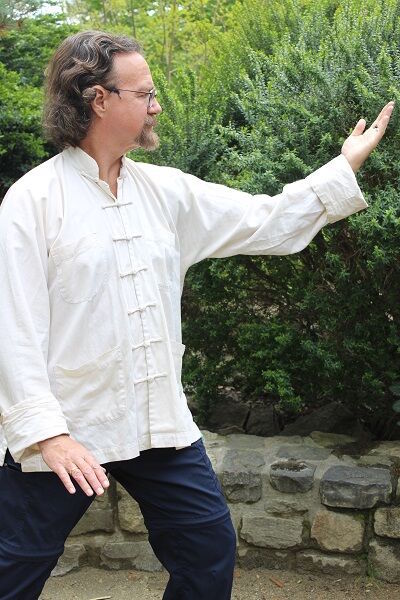There is an amazing array of research studies supporting the benefits of tai chi and related exercises for a wide range of conditions. Metarobic theory explains how and why from a medical perspective, but there still remains the question of why some studies show conflicting results particularly in the field of cancer. A large part of this can come from poor study or program design, without considering dosage (amount of time spent practicing tai chi,) as well as style and parameters of practice. These are two areas constantly identified as a shortcoming in studies, along with a lack of measurable theoretical constructs. Metarobic theory can help address these concerns.
Much of my understanding related to dosage came from case stories on how people used tai chi to overcome various conditions. This includes over 30 case stories related to cancer. One of the most notable aspects was the amount of time spent doing tai chi, if given only weeks to live. Helen Liang was one of these. With the support of family members, Helen began a regimen which included two thirds of her day spent in meditation, qigong and tai chi, in addition to various herbal remedies. Her condition reversed and her cancer was cured. Many other case stories reported multiple of hours of practice each day. Yet in scientific studies on tai chi and cancer, most participants were measured while learning tai chi for only an hour or so for a few times a week. And I state "learning tai chi," since learning can be very different from doing tai chi. As noted by one researcher, it was surprising that significant benefits were realized, since most class time was spent with the instructor talking. This is not necessarily the norm in tai chi studies. But it does underscore the need for carefully designed research that also addresses the format and amount of tai chi practiced.
How Much Time for Tai Chi?
So how much time needs to be spent to experience the benefits of tai chi? And does it matter the style or format? Much of this may depend on the health concern being targeted. Significant benefits have been documented for a wide range of health concerns in over a thousand studies, with just a few hours a week. It may be possible that for general health, and for many conditions, a daily or periodic practice may suffice. But if you have a severe condition, one for which conventional medicine is not working, or if you are facing death or disability, doing tai chi daily, or even several times a day, may be something to consider (in conjunction with conventional medicine and your doctor's advice.) It can be a difficult decision, particularly since family members may not understand how something like tai chi might help. Sharing an evidence-based understanding of how and why mindful exercises can benefit chronic conditions can help with support, as well as with motivation.
Motivation is also tied to personal discipline and choice. Doing tai chi two or three times a day or more might seem a clear choice over a life of pain or disability (or even death). But it still comes down to personal choice. This became personally relevant to me, when I developed celiac neuropathy during my doctoral studies. It was a depressing situation – here I was researching how tai chi had the potential to treat a variety of chronic conditions, yet it did not cure my own. Numbness progressed to the point that I could not feel my arms or legs. Then I came across the case story of another person with peripheral neuropathy. Their neuropathy cleared up when they increased practice to two time a day. I almost slapped my head when I read this – dosage had been a key element in many of the cancer case stories. I increased my own practice to three times a day. Over the next few weeks the neuropathy cleared up, with all feeling returning to my arms and legs. Since then, I have found that practice every morning and night will keep the neuropathy at bay. Until doctors can figure out why and how to permanently eliminate this condition, it is worth it to me to continue twice daily practice, to keep pain free with full use of my limbs.
Drugs or Tai Chi?
This is a very personal choice. I had related my story to a woman who said her husband had very painful peripheral neuropathy. She laughed, saying that she does tai chi, and keeps bugging her husband to do it. But he told her that he would rather be in pain and take pills. A choice which can seem easier than dedicated tai chi practice. The nice thing about tai chi is that unlike many drugs, there are no side effects. And in many cases, research supports that tai chi can be as effective as medication for many conditions (again, discussing any medical changes with your doctor.) Aside from supporting research, case stories cited in Mindful Exercise document people who were wheel chair bound, but regained the full use of their legs through dedicated practice.
The key here is dedication. So how can you develop a dedicated practice, one that fits in within your life and current activities? Over the years I have found a few things which helps me in my own practice. The first deals with the difficulty in getting support from others. Sooner or later, you may come across friends or family who just don't understand how moving slowly and focusing on the breath can help anything, much less a serious condition. Sharing research on benefits or measurable Metarobic effects can help. But sometimes it comes to the point of stating that "it matters to me," or "it is important to me." If people insist that benefits are "all in your head," you can stress that this is still a benefit, and that tai chi makes you feel better. And that is what counts. And sometimes it may simply come down to walking off and doing tai chi, until others in your life finally accept that this is something that is important to you.
Fitting Tai Chi into your Daily Life
Another area of difficulty can be in fitting tai chi or other Metarobic exercises into your life. Doing tai chi even two times a week can be difficult to fit into a weekly schedule, much less daily or several times a day. Breaking tai chi up by when and where you practice can help. Waking up a little early can get in a morning practice. Listening to relaxing music can help relax the mind and the body, and allows the body to wake up gently. The relaxed mind state during tai chi results in theta and delta waves which also occur during light and deep sleep. The state of brain waves during meditative practice may be at least a partial substitution for sleep, if you are tight on time.
But ideally, you are able to get a good seven to nine hours of sleep each night, and have time for tai chi. If you watch 30 minutes or so of TV in the morning before heading to work, there is no reason you need to do this sitting. Doing tai chi while watching TV, or listening to the radio, may reduce some of the meditative benefits. But you can still generate deep states of relaxation and Metarobic effects. The same goes for evening practice. If you spend your evenings with a spouse or family watching TV, you can take 30 minutes or so to stand to one side and do your practice, before joining them on the couch. Another good time is right when you get home from work. Doing tai chi after work can help eliminate that feeling of exhaustion at the end of the day. Or try tai chi just before bed, to begin entering a meditative and sleep ready state.
There are also many opportunities to practice during the day. Doing a few minutes of tai chi during work breaks enhances productivity as well as relaxation. Or take part of your lunch break to do tai chi. Inviting coworkers to join you can enhance social support, just like a walking group. As workplaces see the benefits for reducing health costs and increasing productivity, more places of business may allow extra time for "tai chi breaks." Some businesses are already allowing part of each day for wellness breaks, with fitness centers located onsite. Studies have shown a return in investment ranging from three to seven dollars, for each dollar spent in employee wellness.
Finding a tai chi group can also enhance dedication. Social aspects of any activity can enhance adherence to that activity. In a survey of national tai chi programs, the social aspect of tai chi was cited as a primary motiving factor. For severe medical conditions, talk with your doctor regarding adapting practice for the bedside, or for finding someplace to practice within a hospital setting. In one case story, the person left the hospital each morning, to practice with a qigong group in the park across the street. Another person asked their doctor if they could do tai chi before being taken back into the operating room for a pacemaker. After doing tai chi, their heart stabilized, and they no longer needed the pacemaker.
Tai Chi and the Fight for Health and Life
Ultimately, with dedication, determination, and sometimes with imagination, it is possible to do tai chi at various times throughout the day, in pretty much any location or situation. And if you have a serious condition, Metarobic practice of exercises such as tai chi and qigong gives you one more option in the battle for life and health. As with aerobic exercise, research and time will refine guidelines for practice. The American College of Sports Medicine continually refines recommended times for aerobic exercise, based on new research. Your current health and target goals may ultimately affect the necessary amount of practice. Tai chi, with roots in health as a form of qigong, and in martial arts as a form of kung fu, may be a perfect crossover in the fight for life for those in need.
The above is an original article by Anthony Peter Gryffin, author of Mindful Exercise: Metarobics, Healing, and the Power of Tai Chi, YMAA Publication Center, pub date August, 2018.




